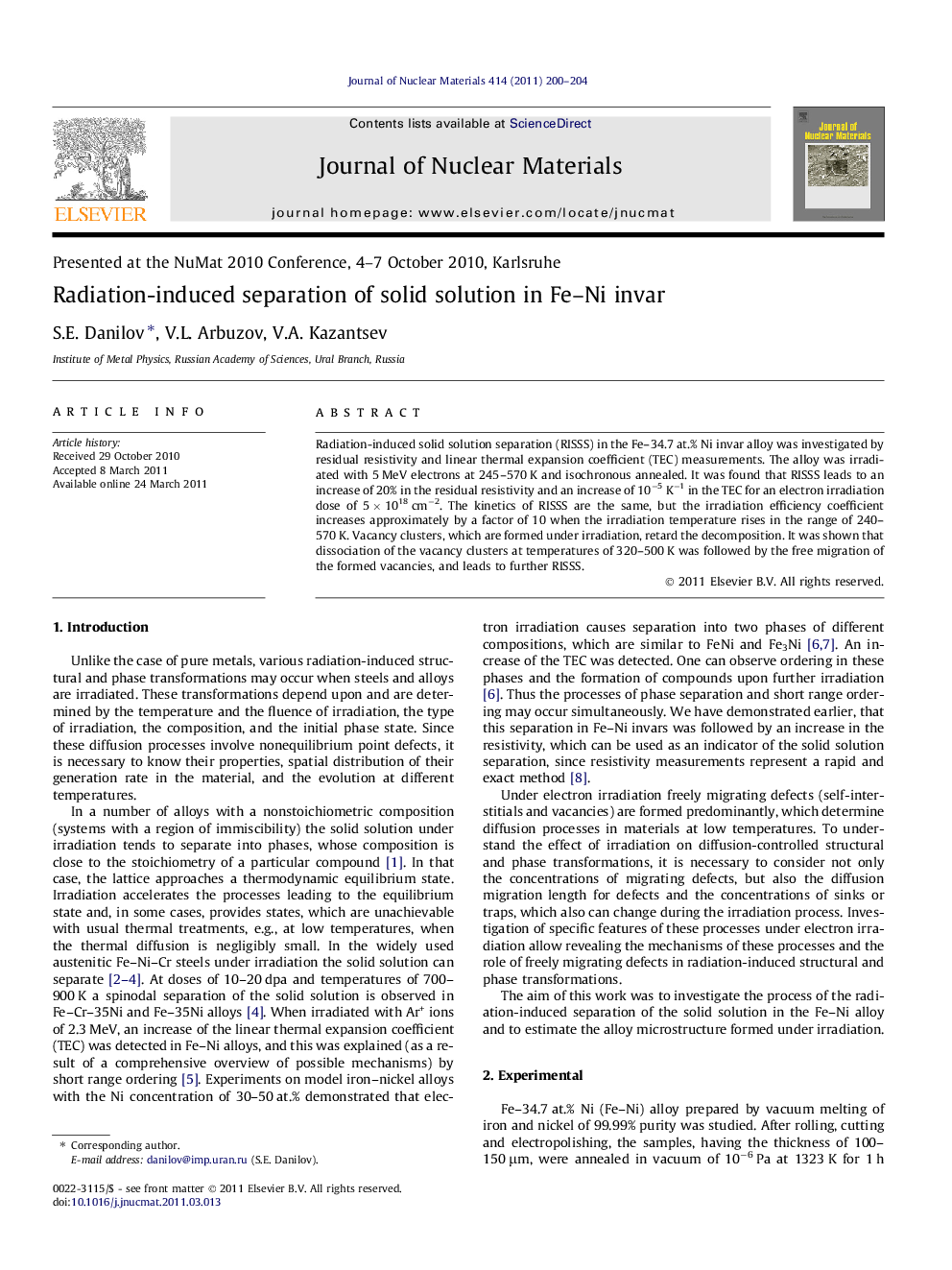| Article ID | Journal | Published Year | Pages | File Type |
|---|---|---|---|---|
| 1566679 | Journal of Nuclear Materials | 2011 | 5 Pages |
Radiation-induced solid solution separation (RISSS) in the Fe–34.7 at.% Ni invar alloy was investigated by residual resistivity and linear thermal expansion coefficient (TEC) measurements. The alloy was irradiated with 5 MeV electrons at 245–570 K and isochronous annealed. It was found that RISSS leads to an increase of 20% in the residual resistivity and an increase of 10−5 K−1 in the TEC for an electron irradiation dose of 5 × 1018 cm−2. The kinetics of RISSS are the same, but the irradiation efficiency coefficient increases approximately by a factor of 10 when the irradiation temperature rises in the range of 240–570 K. Vacancy clusters, which are formed under irradiation, retard the decomposition. It was shown that dissociation of the vacancy clusters at temperatures of 320–500 K was followed by the free migration of the formed vacancies, and leads to further RISSS.
